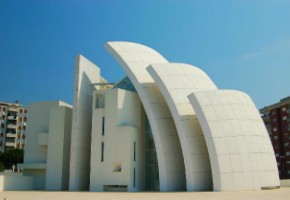New churches, old Europe

European churches are currently engaged in an architectural culture war.
Cardinal Gianfranco Ravasi declared the outbreak of hostilities in 2013 with a sweeping condemnation of many recently built churches in Italy, which, he said, were intended to win design prizes rather than to serve the needs of liturgy. Instead of seeking to create a suitable mood for celebration or meditation, architects have extolled abstract geometric form. Ignoring religious needs, they “tend instead to focus on space, lines, light and sound.”
Nonsense, replied those progressive architects. Concepts of the appropriate setting for Christian worship have changed enormously through the centuries. Throughout history reactionaries have condemned innovative buildings that over time come to be recognized as epochal masterpieces.




